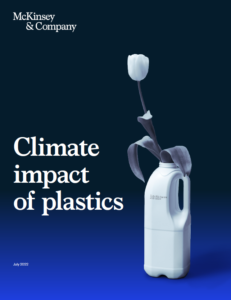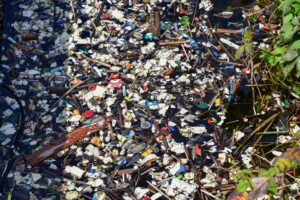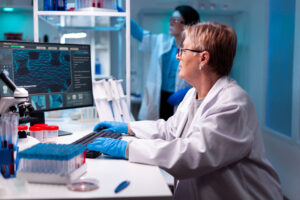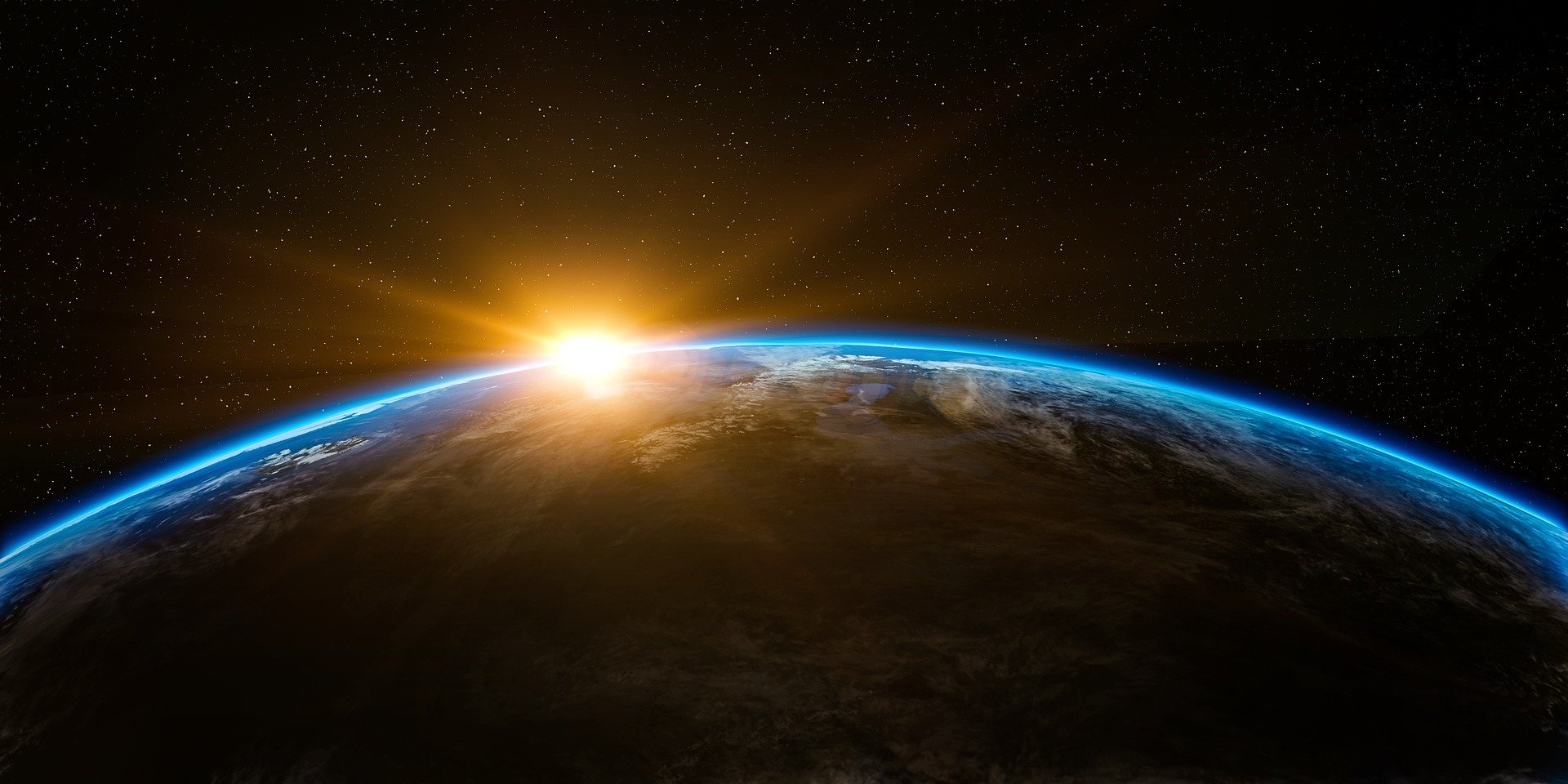What’s Wrong with the McKinsey & Company Climate Impact of Plastics Report?

In July of 2022, McKinsey & Company published a report titled “Climate impact of plastics”, which has received criticism from many plastic-free non-profit organizations and activists on social media. In our opinion, what’s wrong with the McKinsey plastic report?
The report claims that despite their negative environmental impact, plastics “play an important role in enhancing use efficiencies and reducing greenhouse gas emissions”.
Later the report claims also that “there is one aspect of this conversation that has not received the attention it deserves: the environmental benefits plastics bring compared with alternatives, especially in relation to GHG emissions”.
However, it seems that the report’s comparison of the total greenhouse gas contribution of plastics versus their alternatives fails to account for the impact on climate, including the GHG emissions at the fossil fuel extraction and end-of-life phases, and the issues of ocean pollution, micro/nano plastics disruption, and plastics’ toxicity and their impacts on human health.
As a result, there are concerns that the report may provide companies with an excuse to maintain their current levels of plastic use.


In response to these concerns and the environmental and human health consequences, Captain Forest interviewed Lisa Erdle, Research and Innovation Director at the 5 Gyres Institute in California, who discussed the flaws of the McKinsey & Company plastic report.
Q: What is the difference between the environmental and climate crisis?
The environmental crisis encompasses a range of issues, including the pressing concern of the climate crisis. While global warming and its effects on the climate are critical issues that require immediate action, they are just one aspect of the larger environmental crisis we face today.
Pollution, land use, deforestation, habitat destruction, and biodiversity loss are among the many other urgent environmental issues that require attention and action from individuals, businesses, and governments.
It is vital to address these issues to ensure a sustainable future for ourselves and future generations.
Q: Are existing Life Cycle Assessment (LCA) methodologies appropriate to measure the impact of plastic on the environment?
The Life Cycle Assessment (LCA) is a valuable tool used to assess the environmental impact of products and materials throughout their entire life cycle. This includes all stages from raw material extraction, manufacturing, distribution, use, and disposal.
However, current LCA methodologies used to evaluate the impact of plastics on the environment and climate are often simplistic and narrow.
One significant limitation of plastic LCAs is that they frequently fail to account for the full greenhouse gases and CO2 emissions at the extraction and end-of-life phases.
Roughly 61% of plastic lifecycle emissions occur during the fossil fuel extraction stage,
And approximately 12% of all plastic waste ever created has been incinerated.
If we consider the plastic extraction and end-of-life phases, the entire plastics lifecycle would be the world’s fifth-largest emitter of greenhouse gases (1).
Consequently, reported emissions may be significantly underestimated.
Furthermore, LCA methodologies frequently only consider a portion of greenhouse gas emissions and fail to address other critical factors, such as the impact on marine and terrestrial wildlife, the disruption of micro/nano plastics found throughout the environment (including soils, water, air, mountains, and even blood), and the various chemicals that plastics carry and their effects on human health.
Relying on these simplistic LCA methodologies may mislead companies into believing that their environmental impact is minimal when, in fact, it is significant.
To address the plastic issue, we must adopt a more comprehensive and holistic approach. Rather than only focusing on carbon emissions, we must consider all environmental impacts when making decisions. This will encourage companies to seek more sustainable alternatives and ensure they are held accountable for their actions.
Q: If we reduce GHG emissions, do we necessarily have a positive impact on the environment?
Reducing greenhouse gas emissions is undoubtedly crucial, but we must not overlook the negative impact of plastics on the environment and human health.
Plastic pollution leads to biodiversity loss as an estimated 12 million tons of plastic enter the ocean each year, harming marine species through ingestion and entanglement.

The pollution caused by plastics is both physical and chemical, as they degrade into fragments and micro/nano plastics that disrupt natural habitats worldwide.
Furthermore, plastics are made of polymers that are often linked with toxic chemical additives, which can negatively impact human health. Recent laboratory studies suggest that plastics also have a detrimental impact on human health.(2)

Given the various adverse effects of plastics, it is important to consider their full impact when making decisions about their use. Taking a holistic approach to addressing the environmental crisis will allow us to account for all the negative effects of plastics and promote more sustainable alternatives.
Q: Can you explain the relationship between mass consumption and single-use plastics (SUPs)?
Whether mass consumption caused the proliferation of SUPs or vice versa is a complex question that has been debated for decades. The use of SUPs and the rise of consumer culture have progressed in tandem since the 1950s.
Manufacturers of plastic and consumer goods heavily promoted SUPs as a convenient and time-saving solution, encouraging a culture of rapid use and disposal. This shift in consumption patterns generated a cycle of mass production and consumption of SUPs.
Despite the extensive production and consumption of SUPs, only a small percentage of plastic waste is recycled.
In fact, since 1950, merely 9% of all plastic produced has been recycled, with the majority ending up in landfills or being incinerated.
Q: A shortcoming in the report is to consider that plastic alternatives will be replaced one by one by non-plastic options. Can you explain the flaw of this argument?
In our opinion, in the McKinsey report, one of the first shortcomings is the comparison of plastics with other materials using LCA methodology
To ensure accurate results, comparing products that serve the same function, have a similar lifespan, and are produced using comparable methods is important.
Comparing a plastic water bottle with a glass or aluminum bottle may not be valid since they have different properties, functions, and production methods, resulting in different environmental impacts.
The second shortcoming is the misrepresentation of the circular economy approach, which does not propose a simple replacement of plastic items with non-plastic alternatives. Instead, the circular economy approach emphasizes a fundamental shift in the economy that focuses on:
- Reducing consumption,
- Promoting the reuse and repair of items,
- And creating closed-loop systems where waste is eliminated, and materials are continuously reused.
By adopting a holistic approach, we can create a more sustainable and resilient system that reduces our overall environmental impact.
Q: Another shortcoming is to consider that most GHG emission savings happen in the transportation phase because of the weight of plastic compared to alternative materials. Can local economies and short distribution circuits solve this issue?
The McKinsey report’s assumption that most greenhouse gas emissions savings occur in the transportation phase due to the lighter weight of plastic compared to alternative materials is flawed.
The circular economy movement does not promote the one-to-one replacement of plastic items with non-plastic alternatives and then transporting them over long distances.
Instead, the movement advocates for reducing overconsumption and developing local economies with shorter supply chains to address transportation issues.

For instance, local refill shops where customers can bring their own reusable containers are crucial in achieving zero-waste cities and economies.
This approach prioritizes reducing waste and promoting closed-loop systems, ultimately resulting in a more sustainable and resilient economy.
Q: Are there positive plastics use in terms of environmental and social impact?
Although there are some beneficial uses of plastic, such as in the medical and transportation sectors, it is important to consider the overall lifespan of plastic products.
Single-use plastics (SUPs) have a short lifespan and contribute to the linear “make, use, dispose” economy, leading to the proliferation of plastics in the environment.
Conversely, when a plastic product is durable and can last for decades, such as in the case of vehicles like planes, plastic may be a viable solution to reduce greenhouse gas emissions.
Therefore, it is crucial to carefully consider the environmental impact and lifespan of plastic use in different contexts to determine its appropriateness and ensure that its benefits outweigh its negative impacts.
Q: What does the non-plastic circular economy look like?
Transitioning towards a plastic-free circular economy necessitates a fundamental shift towards reduction, reuse, and repair.
It entails providing consumers with better alternatives, which can be accomplished by establishing refill shops or zero-waste stores.
Nevertheless, the availability of these alternatives may differ depending on the geographic location. Thus, cities and companies must invest in these directions to guarantee universal access.
Substituting plastics only makes environmental sense if we actively strive to diminish our overconsumption behavior.
By adopting a culture of moderation, reuse, and refill, we can make significant progress toward creating a plastic-free circular economy.
Q: Can material innovation be a solution to the problem? And in which cases?
Material innovation plays a critical role in the quest for a plastic-free circular economy, especially for items that are challenging to replace and incorporate into reusable systems.
One such example is meat plastic wrap foil, vital for preservation and distribution.
Despite the growing trend towards plant-based diets, meat products remain a dietary staple for many people, making it necessary to find alternatives that prevent contamination and bacterial growth.
Biodegradable plastics are a potential solution as they can break down naturally and reduce waste. However, it is essential to manage them correctly to avoid contributing to other environmental issues, such as microplastic pollution.
Developing alternative materials such as cellulose-based or compostable options can also be explored, which can perform the same function as meat plastic wrap foil while being more sustainable and less environmentally harmful.
Conclusion
In our opinion, the McKinsey plastic report has some limitations, and it is necessary to take a comprehensive approach to make well-informed decisions. The climate crisis is just one part of a larger environmental crisis, and reducing carbon emissions alone is not enough.
The current Life Cycle Assessment (LCA) methodologies used to evaluate the environmental impact of plastic seem to be too narrow and simplistic.
They do not consider the full impact of plastics on climate, on the environment, and on human health.
Additionally, comparing different materials with varying properties and functions may not be a valid comparison when using the LCA methodology.
The non-plastic circular economy is not focused on simply replacing all plastic items with non-plastic alternatives and transporting them all to different locations.
Rather, it advocates for reducing, reusing, and repairing goods that are already available in the market. Local economies and short circuits are a crucial part of this strategy.
While plastics can have some positive uses, such as in the transportation sector, it is important to consider their lifespan and sustainability to avoid further proliferation. For items that are difficult to replace and incorporate into reusable systems, materials innovation can be a viable solution.
Overall, Captain Forest recommends that governments and companies take the following actions:
- Phase down plastic production,
- Develop circular economy policies,
- Improve waste management infrastructure,
- Invest in reuse and refill systems,
- Encourage material innovation,
- And promote the development of local economies and short circuits.
 Lisa Erdle biography:
Lisa Erdle biography:
Lisa is the Director of Science & Innovation at the 5 Gyres Institute. She is a microplastics researcher, and leads expeditions to study plastic pollution in the environment. Lisa completed her PhD at the University of Toronto, where her research focused on the sources, fate, and effects of microplastics, focusing on microfibers. In her work, Lisa uses science to inform solutions.
Disclaimer: The information presented in this article is based on the author’s research and understanding at the time of writing. Readers are encouraged to independently verify the information and form their own opinions.




